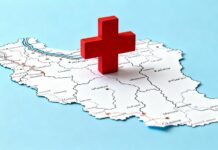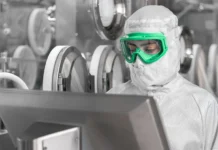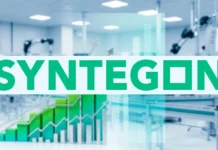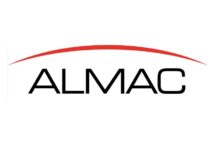In today’s global landscape, the intersection between legitimate pharmaceutical supply chains and illicit drug markets presents significant challenges. This confluence not only impacts public health but also raises legal and ethical concerns. If you are concerned about the legal implications, especially regarding the supply of drugs, you might find it beneficial to consult the concerned in the supply of class A drugs sentencing guidelines.
Understanding how these worlds collide can shed light on the complexities of drug distribution and the thin line that separates legality from illegality. Here, our experts demystify these subjects concisely, so read on to learn the distinction between pharmaceuticals and illicit drug lines and how this might affect you.
The Basics of Pharmaceutical Supply Chains
The pharmaceutical supply chain is a sophisticated network involving various stages, from research and development to distribution. This process ensures that medications reach patients safely and efficiently. Key components include:
- Research and development
- Manufacturing
- Quality assurance
- Distribution and logistics
- Retail and dispensing
Each step is meticulously regulated to ensure compliance with international standards and to safeguard public health. For a detailed understanding of this intricate process, you can explore an informative report on commercial pharmaceutical supply chains.

The Underworld of Illicit Drug Markets
In stark contrast, the illicit drug market thrives in the shadows, working outside the bounds of legal frameworks. This market is driven by demand for substances that are often restricted or illegal. The illegitimate supply chain is characterised by:
- Unregulated production
- Smuggling and trafficking
- Black market sales
- High risk of adulteration
These activities can have devastating consequences on health and society, contributing to a rise in drug-related crimes and health crises.
Where the Lines Blur
The collision between these two worlds occurs in various ways. Often, it involves the diversion of legitimate pharmaceuticals into illicit markets. This can happen due to:
- Theft from supply chain facilities
- Fraudulent prescriptions
- Corruption within distribution networks
The repercussions of such diversions are severe, leading to increased accessibility of potent drugs without medical supervision. For insights into building a more resilient pharmaceutical supply chain, you might want to consider the role of geographic strategies in strengthening supply chains.
Impact on Public Health
The intersection of legitimate and illicit drug supply chains has far-reaching implications for public health. When pharmaceutical products intended for medical use are diverted into the illegal market, they often end up in the hands of those who use them recreationally or irresponsibly. This can lead to increased rates of addiction, overdoses, and even deaths.
Moreover, the presence of counterfeit or adulterated drugs in the market poses a significant threat to patient safety, as these products often do not meet the rigorous standards of quality and efficacy of legitimate pharmaceuticals. One of the critical issues is the lack of oversight and regulation in the illicit market, which can result in the availability of dangerous substances.
These substances are often marketed as legitimate medications, misleading consumers into believing they are safe to use. This deception exacerbates the health risks and places an undue burden on healthcare systems that must manage the fallout from such incidents.
Legal and Ethical Considerations
The legal landscape surrounding drug supply chains is complex and multifaceted. Governments worldwide enact stringent regulations to control the manufacture and distribution of pharmaceuticals, but the clandestine nature of the illicit drug market makes enforcement challenging. Legal frameworks must continuously evolve to address new methods of diversion and trafficking.
Ethically, there is a responsibility to ensure that medications reach those in need and are used appropriately. Healthcare professionals, pharmaceutical companies, and regulatory bodies must work collaboratively to strengthen the integrity of supply chains. This includes implementing robust tracking systems and secure distribution channels to prevent diversion and ensure that drugs do not fall into the wrong hands.
The Pharmaceutical Supply Chain Initiative offers guidance on best practices and collaborative efforts to enhance the security and efficiency of drug supply chains globally. By adopting such initiatives, stakeholders can mitigate the risks associated with the convergence of legitimate and illicit markets.
Strategies for Addressing the Issue
Addressing the convergence of legitimate and illicit drug markets requires a multi-faceted approach. Key strategies include:
- Enhancing traceability: Implementing advanced tracking technologies can help monitor the movement of drugs through the supply chain, making it easier to identify and prevent diversions.
- Strengthening regulations: Governments need to continually update and enforce regulations to address emerging threats and ensure compliance across the supply chain.
- Increasing collaboration: Stakeholders, including law enforcement, healthcare providers, and pharmaceutical companies, must work together to share information and resources.
- Educating the public: Raising awareness about the dangers of illicit drugs and counterfeit medications can help reduce demand and encourage responsible use of pharmaceuticals.

Image source:
Unblurring the Lines
The collision between legitimate pharmaceutical supply chains and illicit drug markets is a complex and pressing issue that demands attention from all stakeholders involved. By understanding the dynamics at play and implementing strategic measures, it is possible to safeguard public health and maintain the integrity of drug distribution systems.
Collaboration, regulation, and education are key components in addressing the challenges posed by this intersection. By taking proactive steps, society can work towards minimising the impact of illicit activities on the health and well-being of individuals and communities.
Please be advised this article is for informational purposes only and should not be used as a substitute for advice from a trained legal or medical professional. Please seek the advice of a legal or medical professional if you’re facing issues regarding director liability.



















